A block of mass 'm' is held stationary against a rough wall by applying a force F as shown. Which one of the following statement is incorrect ?
A. Friction force = mg
B. F will not produce torque
C. Normal will not produce torque
D. Normal reaction = F
Friction force = mg
F will not produce torque
Normal will not produce torque
Normal reaction = F
The correct Answer is:C
To solve the problem, we need to analyze the forces acting on the block and determine which statement is incorrect.
1. Identify the Forces Acting on the Block:
- The weight of the block, mg, acts downwards.
- The applied force F is acting horizontally against the wall.
- The normal force N acts perpendicular to the wall (horizontally).
- The frictional force fs acts upwards to prevent the block from sliding down.
2. Establish the Equilibrium Conditions:
- Since the block is stationary, we can apply the conditions for equilibrium.
- In the vertical direction (y-direction):
fs=mg
- In the horizontal direction (x-direction):
N=F
3. Analyze Each Statement:
- Statement A: Friction force = mg
- This is true because the frictional force must balance the weight of the block to keep it stationary.
- Statement B: F will not produce torque.
- This is true because the force F is applied at the center of mass of the block, which means the distance r from the pivot point (center of mass) is zero, resulting in zero torque.
- Statement C: Normal will not produce torque.
- This is also true for the same reason as above; the normal force acts at the center of mass.
- Statement D: Normal reaction = F
- This is true as we established from the equilibrium in the x-direction.
4. Conclusion:
- All statements A, B, C, and D are correct. Therefore, the question asks for the incorrect statement, and since all options are correct, the answer is that none of the statements are incorrect.
Final Answer:
None of the statements are incorrect.
- The weight of the block, mg, acts downwards.
- The applied force F is acting horizontally against the wall.
- The normal force N acts perpendicular to the wall (horizontally).
- The frictional force fs acts upwards to prevent the block from sliding down.
- Since the block is stationary, we can apply the conditions for equilibrium.
- In the vertical direction (y-direction):
fs=mg
- In the horizontal direction (x-direction):
N=F
- Statement A: Friction force = mg
- This is true because the frictional force must balance the weight of the block to keep it stationary.
- Statement B: F will not produce torque.
- This is true because the force F is applied at the center of mass of the block, which means the distance r from the pivot point (center of mass) is zero, resulting in zero torque.
- Statement C: Normal will not produce torque.
- This is also true for the same reason as above; the normal force acts at the center of mass.
- Statement D: Normal reaction = F
- This is true as we established from the equilibrium in the x-direction.
- All statements A, B, C, and D are correct. Therefore, the question asks for the incorrect statement, and since all options are correct, the answer is that none of the statements are incorrect.
None of the statements are incorrect.
Topper's Solved these Questions
- LAWS OF MOTIONBOOK - AAKASH INSTITUTE ENGLISHCHAPTER - LAWS OF MOTIONEXERCISE - ASSIGNMENT ( SECTION -C) objective type questions (More than one options are correct)
21 Videos
- LAWS OF MOTIONBOOK - AAKASH INSTITUTE ENGLISHCHAPTER - LAWS OF MOTIONEXERCISE - ASSIGNMENT ( SECTION -D) Linked Comprehension Type Question
1 Videos
- LAWS OF MOTIONBOOK - AAKASH INSTITUTE ENGLISHCHAPTER - LAWS OF MOTIONEXERCISE - ASSIGNMENT ( SECTION -A)
50 Videos
- KINETIC THEORYBOOK - AAKASH INSTITUTE ENGLISHCHAPTER - KINETIC THEORYEXERCISE - EXERCISE (ASSIGNMENT) SECTION - D Assertion - Reason Type Questions
10 Videos
- MAGNETISM AND MATTER BOOK - AAKASH INSTITUTE ENGLISHCHAPTER - MAGNETISM AND MATTER EXERCISE - ASSIGNMENT (SECTION D)
26 Videos
Similar Questions
A block of mass m is at rest under the action of force F against a wall as shown in figure. Which of the following statement is incorrect?
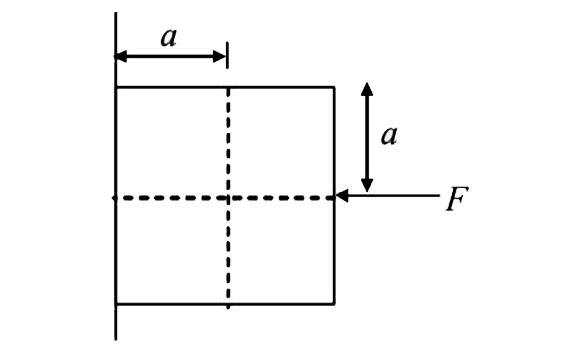
View SolutionA block of mass 1 kg is held at rest against a rough vertical surface by pushing by a force F horizontally. The coefficient of friction is 0.5. When
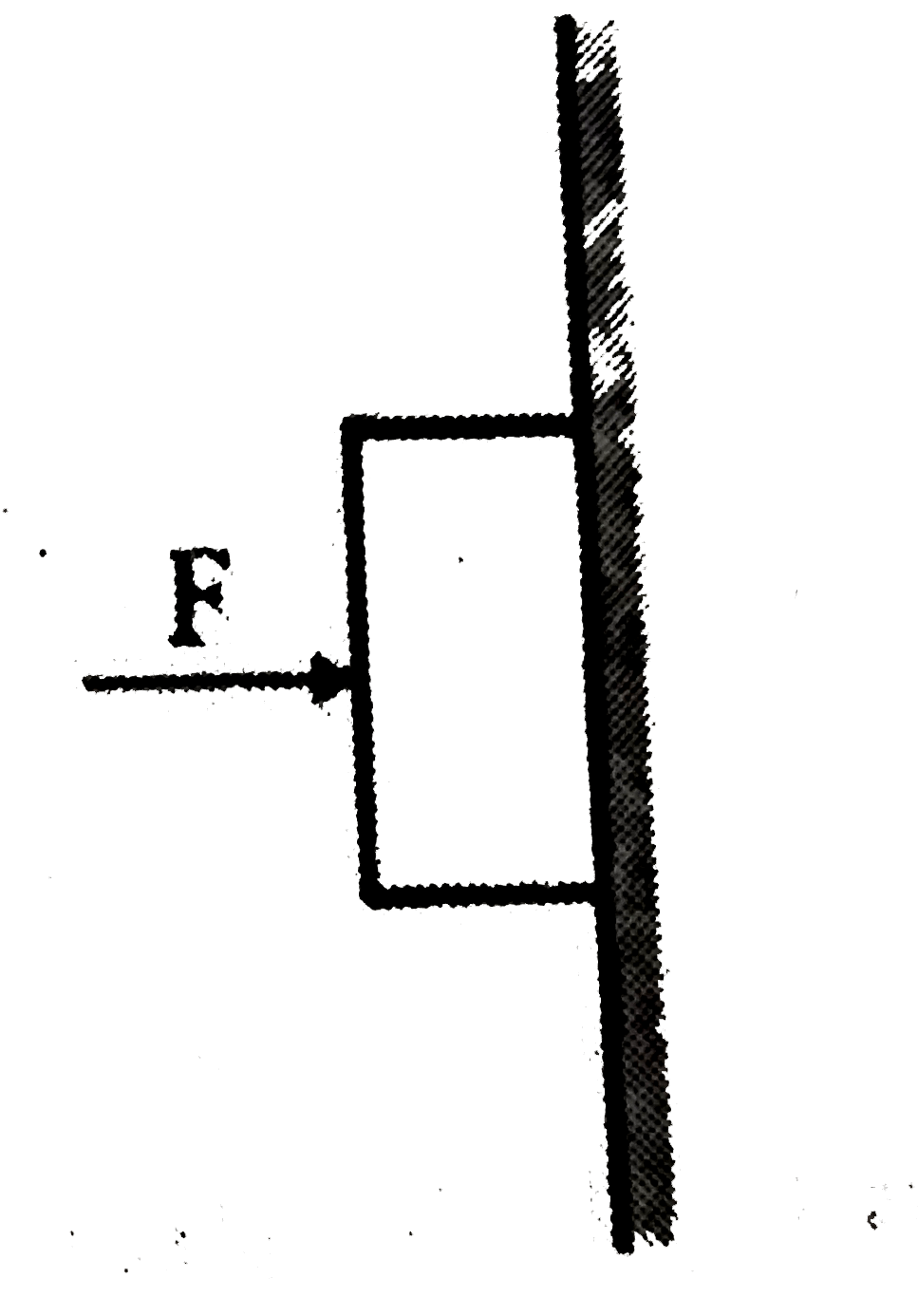
View SolutionBlock a of mass 4 kg is to be kept at rest against a smooth vertical wall by applying a force F as shown in figure. The force required is :- (g=10m/s2)
View SolutionA block of 1 kg is stopped against a wall by applying a force F perpendicular to the wall. If μ=0.2 then minimum value of F will be
View SolutionA block weighs W is held against a vertical wall by applying a horizontal force F. The minimum value of F needed to hold the block is
View SolutionA block of mass m is placed on a rough horizontal floor and it is pulled by a ideal string by a constant force F as shown. As the block moves towards right the friction force on block
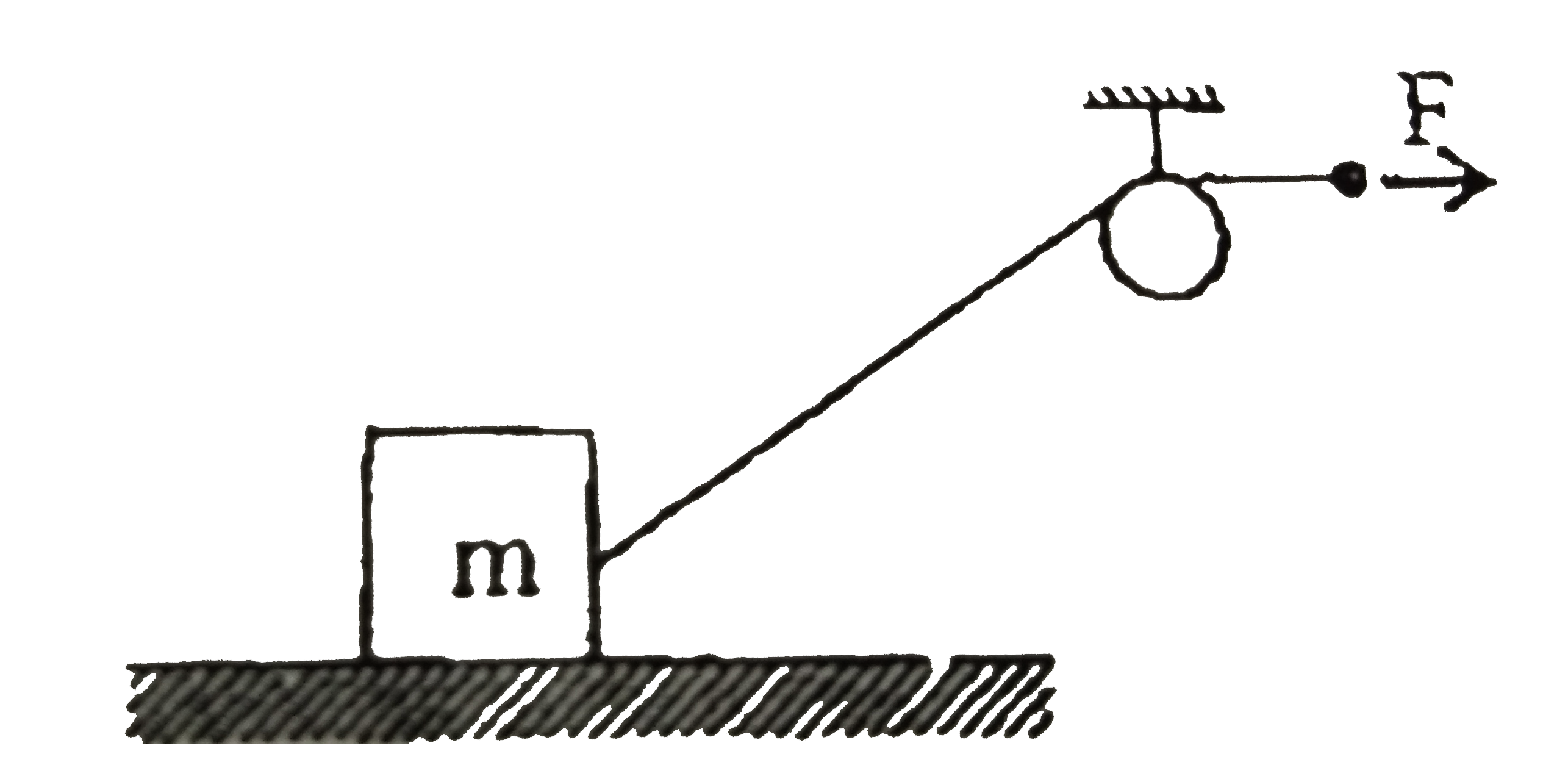
View SolutionA block of mass 10 kg is held at rest against a rough vertical wall [μ=0.5] under the action a force F as shown in figure. The minimum value of F required for it is (g=10m/s2)
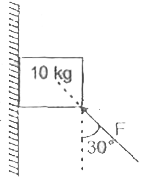
View SolutionA block of 50 N is pressed normally against a wall as shown. The frictional force acting on the block is :
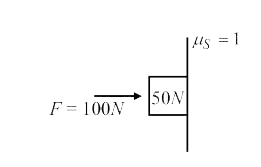 ]
]
View SolutionA cubical block of side 'a' is held at rest, against a rough vertical wall by applying a force F acting along the centre. The mass of the block is m. Taking acceleration due to gravity as 'g' , determine
(i) The minimum coefficient of friction between the block and wall
(ii) The torque by normal reaction about the centre of mass
View SolutionA block of mass 'M' is pressed against a wall with a horizontal force F. Then
a) it will slide down if the wall is smooth
b) frictional force may balance the weight if the wall is rough
c) Normal reaction is equal to weight of the block
d) Normal reaction is zero if the wall is smooth
View Solution
